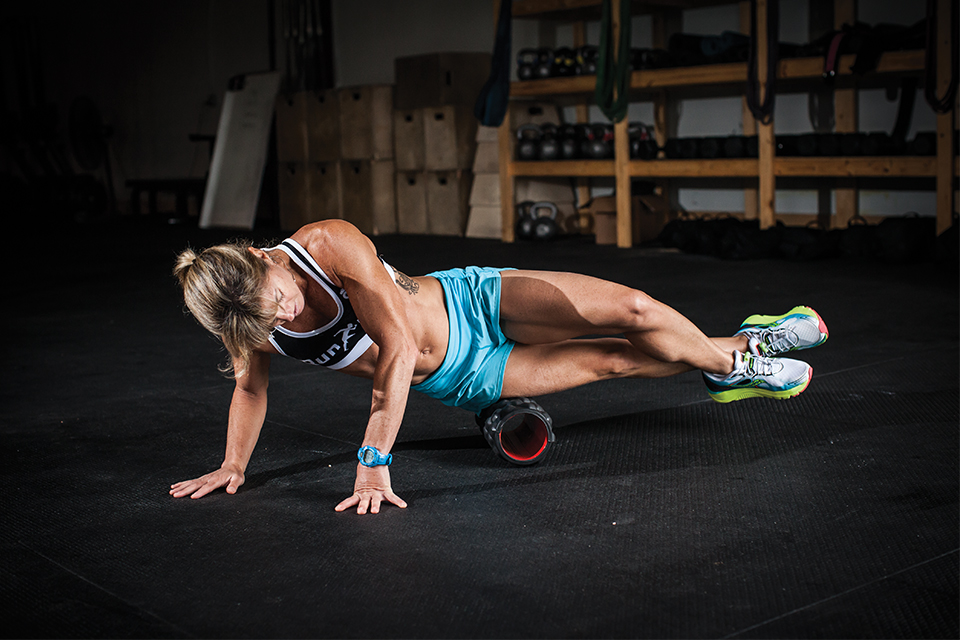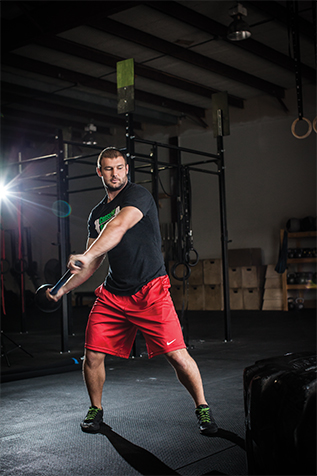Gear Test

The Thing
It’s been said that recovery is an important part to gaining strength and fitness—almost as much as training itself. One of the most effective ways to address tightness or soreness and facilitate tissue repair is self-myofascial release. Fortunately, there is no shortage of products available for this purpose.
This month, we tried out The Thing foam roller from Perform Better.
We see and use a lot of these foam rollers. With their varying shapes, sizes, and colors, it’s becoming harder for new ones to distinguish themselves from the crowd. In appearance and construction, The Thing is the love child of those hard, rumbly rollers and the bright, hollow Trigger Point rollers. We put it to the test on a collection of strength and endurance athletes. (One liked it so much she insisted on taking it with her to Ironman Texas and we haven’t seen it since.)
If you buy the principle behind Trigger Point theory (we do), The Thing does a better job than smoother rollers of pushing into soft tissue tough spots and facilitating the release of tension. Its hexagonal bumps will win the “just right” approval from Goldilocks—not too hard, not too soft. The bright red color on the inside of the roller helps it stand out from its peers on our self-treatment shelf, but what we like most is its travel-friendliness. The Thing is 5 inches wide, 13 inches long, and weighs about a pound. The hollow core is big enough to fill with shorts, socks, a shaker bottle, and a couple of protein pouches. It can also easily pack into your gym bag or carry-on.
Cost
$24–$30
Rating: 5/5 stars
Core Hammer 
Regular sledgehammer strikes on a burly tractor tire are among our favorite primal moves in the gym. Designed to deliver a “dynamic, fun, and safe portable sledgehammer workout, without a tire,” the Core Hammer is an 8-pound, black, round urethane rubber head securely attached to a fiberglass handle.
There’s something simple and satisfying about channeling one’s inner lumberjack to crush a big complex of strikes, tire flips, jumps, and pushups.
The Core Hammer gets big creativity points from us for its simplicity and creativity. No need to worry about tracking down a big tire, finding a way to haul it to your backyard or gym, and scrubbing off the construction crud before you use it.
We loved the feel of striking the hammer on concrete, which is its recommended use. (Although we hit a bunch of other stuff with it too.) Striking solid, 4-by-6 foot rubber flooring produced a seriously unpleasant vibration from the handle through our hands, wrists, and elbows—we recommend you avoid this at all costs. The asphalt parking lot felt good though, with the urethane head sustaining no noticeable damage from the rougher striking surface.
Our favorite choice: solid concrete walls and pillars, which allow for a nice variety of movements through angles and planes of motion that you can’t get with an overhead smash.
Finally, we put the Core Hammer through some rubber-on-rubber violence, turning it loose on some of our big tires. Surprisingly, because of its uniformly round rubber surface, the hammer bounces very predictably off of almost anything. Whereas a standard sledgehammer requires a choice between a vertical or horizontal orientation of the hammerhead (and some precision striking to avoid angled rebounds), with the Core Hammer you just swing away. It’s a great way for a beginner to learn to strike a tire or the ground.
Cost
$200
Rating: 3/5 stars
Hyperwear SandRopes
 If you’re a consistent exerciser, you’ve probably lifted, tossed, and slammed various sizes of SandBells more times than you care to remember. Claiming to provide “a whole body core and cardio workout, with more results in less time,” SandRopes are the most recent addition to the established line of Hyperwear products.
If you’re a consistent exerciser, you’ve probably lifted, tossed, and slammed various sizes of SandBells more times than you care to remember. Claiming to provide “a whole body core and cardio workout, with more results in less time,” SandRopes are the most recent addition to the established line of Hyperwear products.
We dropped by the Hyperwear headquarters in North Austin to pick up a pair of the 15-pound ropes. Covered in thick black neoprene, the sand bladders are 10 feet long, about 2 and a half inches wide, and were easy to grip and throw over a shoulder for the carry to the car.
Once in the gym, we attached the (included) anchors to our usual spot and went to work on a variety of traditional rope patterns—twists, slams, waves, etc. We also loaded them over our shoulders for a squat and traveling-lunge combo with two, 75-foot rope drags at the end of each complex (watch us in action on the online video tutorial). The drags were a fun and challenging finisher.
One of the touted benefits of the SandRope is that it provides the weight and function of traditional ropes in much less space. We found this to be true, and with a 30-pound option (not tested), we imagine a double rope setup would be enough to challenge even the strongest and fittest among us.
One other notable detail was the absence of sand on the gym floor. Most sandbags eventually leak if they are slammed or dropped repeatedly, and the heavier the bag, the bigger the problem. All of Hyperwear’s sand products seem to have no sand-spilling issues, and the ropes are no exception.
Drawbacks: Not all the rope patterns you know will translate. In particular, inside and outside corkscrew patterns didn’t work well for us due to the shortness of the rope. If you can keep the creative part of your workout brain turned on though, this tool provides exceptional variety in a small space.
Cost
$165–$180
Rating: 4/5 stars






